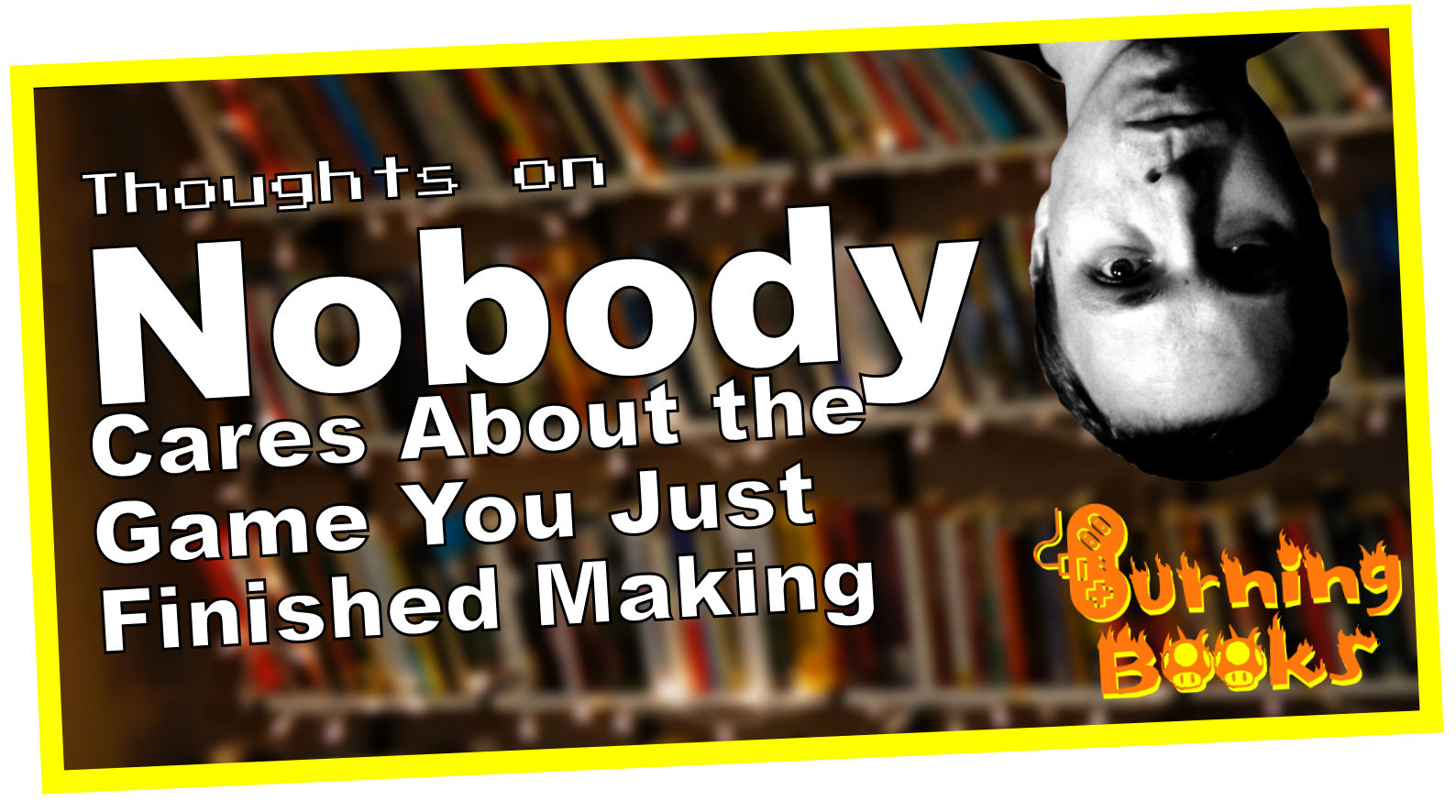Shantae Risky’s Revenge and The Pirate’s Curse – a review [VIDEO]
Welcome to The One Thing, a video game review series that does something a bit different. Rather than try to touch on all the features that make a game great, I attempt to distill a game down to a single element that I believe is integral to the experience of the game. This may not be the only thing that makes a game great, but if someone asked me to tell them why Shantae works, specifically games 2 and 3, I’d start with The One Thing.
What is the one thing? With Shantae, it is the consistent attention paid to retro platformer details while respecting the modern gamer. The game plays well, has great characters, oozes charm, and encourages exploration–all very important to platformers of my youth. And while doing this the game also embraces modern elements such as a refreshingly gradual difficulty curve, plenty of save points, unlimited lives, and bosses that aren’t so much Nintendo-hard as they are I’m-an-adult-and-don’t-have-much-time-to-play-games-easy. If I had to smoosh this The One Thing into a single phase I’d say the Shantae games are Fun.
The term fun is more broad than I prefer, but every time I tried to think of something more poignant, I came back to “fun.”
I love a 2d platformer. I hesitate to call it nostalgia because the 2d platformers of my youth were generally so difficult that having a nostalgic association with them comes across as a bit Stockholm syndrome-y, that psychological phenomenon in which hostages develop feelings for their captors. I’m not going to thank Contra for hurting me over and over. But the best 2d platformers–and modern platformers do this especially well–feature an impressive amount of control, just enough puzzle solving and physical destruction to keep things interesting, and a learning curve that’s fair, meaning if something goes wrong, it’s not the game’s fault. It’s the player’s fault. Like Stockholm Syndrome. Alright, I conceded that their are similarities… Contra only hurts me because she cares.
See, Shantae reminds me what it’s like to be loved. And, I know, this stockholm syndrome thing is getting old fast, but let me extend the metaphor a bit, at least enough to allow me to reign it in. See, Shantae is beautiful 2d platformer, made to look like a 16bit entry from the mid 90s, but it benefits from the vast knowledge that gamers and game developers have collectively gathered and refined since the 90s. Back then, games were long because developers wanted you to get your money’s worth. But now, we understand that gameplay is far more important. Imagine a game like Ninja Gaiden on the NES, but not necessarily difficult, and instead of being pushed back into a chasm every time you get hit, the game actually understands that without fair control, a game is nothing. That’s Shantae. And to be fair, that’s Shovel Knight. That’s Teslagrad. That’s Steamworld Dig. That’s so many other great platformers and puzzle platforms that take the aesthetic simplicity of the retro and merge it with the gameplay sophistication of the modern. I love a 2d platformer. I love Shantae.
Here’s an important note: a game can be enjoyable without being fun. Borderlands 2 is enjoyable. It looks great. It’s got some great humor. But it’s pretty boring, honestly, after a few hours. Not fun. Same with Gianna Sisters. Starts off fun, but gets tedious fast. A game can be demanding, annoying, frustrating, but still be worth playing for reasons other than fun. Maybe it’s a self-empowerment thing, like actually completing Ghosts n’ Goblins (which I’ve never done, btw). Maybe the game is intellectually engaging like The Beginner’s Guide or emotionally engaging like Everybody’s Gone to the Rapture. These games may have elements of fun, but fun certainly isn’t their central intent.
So how do the Shantae games do it?
What Shantae does is take what we know we love about the past, what we perhaps didn’t realize we love about the past, and what we love about modern gaming, and package it into a beautiful, perfect couple of games, and it does this all by not restricting itself to standard platformer conventions.
You’ve got minor RPG elements with weapon upgrades, character power ups, but unfortunately no branching paths. Shantae dabbles in metroidvania with semi-open maps that encourage revisitation once new powers are acquired. The final leg of Risky’s Revenge, game 2 in the series, provides a short side scrolling shoot em up diversion. Acquiring animal powers is common in the game, which is reminiscent of many early era platformers, most notably to my mind, Little Nemo the Dreammaster (I love that game). And though I cannot pinpoint specific influences, the game has a Mega Man feel to it (Perhaps it’s these on-rails platforms). Shovel Knight by way of Ducktales also seem to have some influence.
The only gripe I have is the steep increase in difficulty during the final leg of the final stage of game 3, Shantae and the Pirate’s Curse, where timing had to become impeccable. That was a bit of a let down. I had come to respect the game for not having to rely on difficulty to make it worthwhile, vying instead for ease (which some of us like, dammit). But that’s a minor gripe.
Why am I speaking only of Shantae: Risky’s Revenge (2) and Shantae and the Pirate’s Curse (3), games 2 and 3 in the Shantae series. I haven’t played the first game in the series, but from what I understand, games 2 and 3 top the first in all ways, so I’m okay with not having played it. Add to this that the first game is currently selling for hundreds of dollars, and, well, it’s just not feasible for me to play it.
These versions of Shantae are distributed by Limited Run Games, meaning unfortunately for you, they now cost a lot of money. Limited Run Games, as the name implies, presses limited runs of games and once they are sold they are sold forever. And if you are a collector, don’t be fooled by what may appear to be two different covers for each game. The cover is simply reversible.
Luckily, you can download digital versions of these games for PS4 and Wii. Even more luckily, the next Shantae game in the series will be released later this month (December 2016). Shantae: ½ Genie Hero is a kickstarted game, and the first to move away from pixel-based visuals to a clean HD look. I honestly don’t like the change, but I also understand that my dislike is entirely based on aesthetics. As long as the game plays like a Shantae game and is written like a Shantae game, then the visuals shouldn’t distract me. This new game is developed by the same studio that did all the previous games (WayForward) so I shouldn’t be disappointed.
Let me know in the comments below if you’ve played the Shantae games 2 and 3, and whether or not you agree with my observations, specifically regarding fun.
What games would you recommend for people who like the Shantae games?
And please, if you like this The One Thing approach to video game reviews, let me know. I make decisions based on the comments, so you, dear viewer, are all powerful.
If ever I meet someone who left a comment on one of my videos IRL, I’ll buy that person a beer.
Research/Sources/Credits/Inspirations (this is not a comprehensive list, as that would be impossible, especially the “inspirations” items)
- https://en.wikipedia.org/wiki/Stockholm_syndrome
- https://wall.alphacoders.com/by_sub_category.php?id=174201
- https://wayforward.com/ (Shantae games)
- http://www.playdead.com/ (Inside and Limbo)
- http://www.capcom.com/ (Duck Tales, Ghosts n’ Goblins, Little Nemo: The Dream Masters, and Mega Man)
- http://yachtclubgames.com/ (Shovel Knight)
- http://www.koeitecmoamerica.com/ (Ninja Gaiden)
- http://everythingunlimitedltd.com/ (The Beginner’s Guide)
- https://us.konami.com/ (Contra)
- http://www.gearboxsoftware.com/ (Borderlands 2)
- https://black-forest-games.com/ (Gianna Sisters: Twisted Dreams)
- http://www.thechineseroom.co.uk/ (Everybody’s Gone to the Rapture)
- http://rain-games.com/ (Teslagrad)
- https://imageform.se/ (Steamworld Dig)
The following are YouTube videos licensed under CC BY 3.0
- https://www.youtube.com/watch?v=uCJ_-ryeATA (Duck Tales)
- https://www.youtube.com/watch?v=2v7Dq_nCbH8 (Shovel Knight)
- https://www.youtube.com/watch?v=R52ECqqvk8Y (Ninja Gaiden)
- https://www.youtube.com/watch?v=MUzzwHUL-F4 (Ghosts n’ Goblins)
- https://www.youtube.com/watch?v=P4W65PUVjU0 (The Beginner’s Guide)
- https://www.youtube.com/watch?v=AATqdTyhgFo (Little Nemo)
- https://www.youtube.com/watch?v=OYkk9tc5-WI (Contra)
- https://www.youtube.com/watch?v=zvE23aM7XAQ (Teslagrad)
- https://www.youtube.com/watch?v=X6IOZK0_oRM (Steamworld Dig)
Music Credits
- Rhinoceros Kevin MacLeod (incompetech.com), Licensed under Creative Commons: By Attribution 3.0 License, http://creativecommons.org/licenses/by/3.0/
- Overworld Kevin MacLeod (incompetech.com), Licensed under Creative Commons: By Attribution 3.0 License, http://creativecommons.org/licenses/by/3.0/


